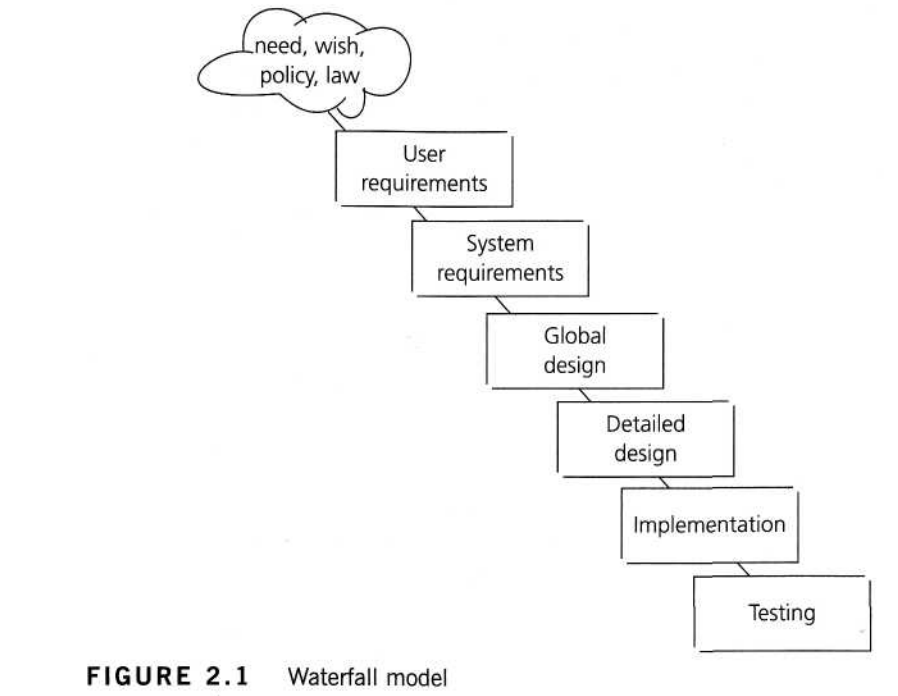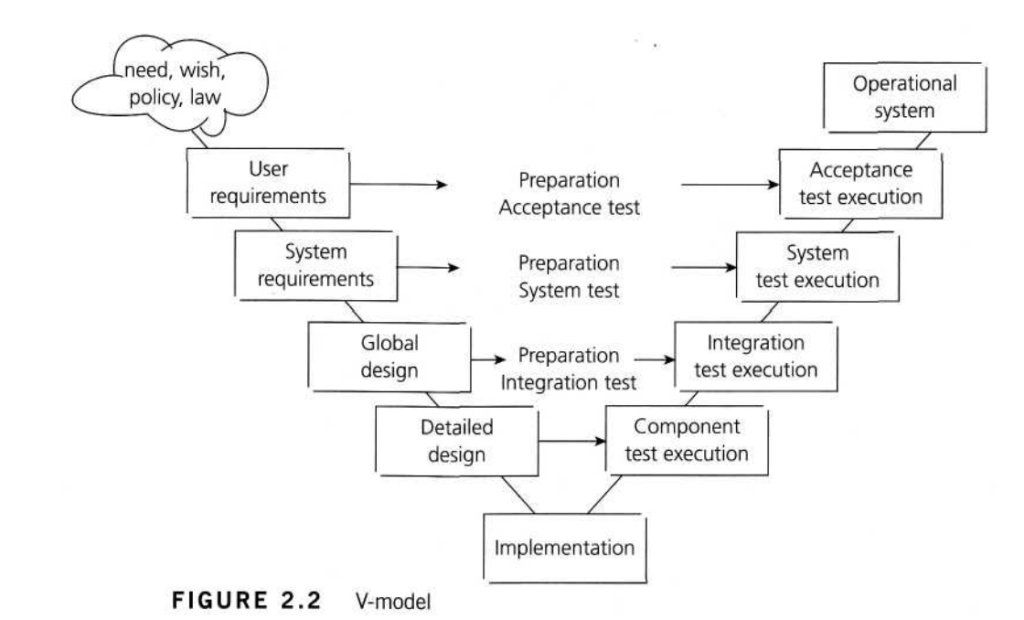Testing is not a stand-alone activity. It has its place within a software development life cycle model and therefore the life cycle applied will largely determine how testing is organized.
There are many different forms of testing. Because several disciplines, often with different interests, are involved in the development life cycle, it is important to clearly understand and define the various test levels and types. This chapter discusses the most commonly applied software development models, test levels and test types. Maintenance can be seen as a specific instance of a development process. The way maintenance influences the test process, levels and types and how testing can be organized is described in the last section of this chapter
2.1 SOFTWARE DEVELOPMENT MODELS
- Understand the relationship between development, test activities and work products in the development life cycle and give examples based on project and product characteristics and context. (K2)
- Recognize the fact that software development models must be adapted to the context of project and product characteristics. (K1)
- Recall reasons for different levels of testing and characteristics of good testing in any life cycle model. (K1)
The development process adopted for a project will depend on the project aims and goals. There are numerous development life cycles that have been developed in order to achieve different required objectives. These life cycles range from lightweight and fast methodologies, where time to market is of the essence, through to fully controlled and documented methodologies where quality and reliability are key drivers. Each of these methodologies has its place in modern software development and the most appropriate development process should be applied to each project. The models specify the various stages of the process and the order in which they are carried out.
The life cycle model that is adopted for a project will have a big impact on the testing that is carried out. Testing does not exist in isolation; test activities are highly related to software development activities. It will define the what, where, and when of our planned testing, influence regression testing, and largely determine which test techniques to use. The way testing is organized must fit the development life cycle or it will fail to deliver its benefit. If time to market is the key driver, then the testing must be fast and efficient. If a fully
documented software development life cycle, with an audit trail of evidence, is required, the testing must be fully documented.
In every development life cycle, a part of testing is focused on verification testing and a part is focused on validation testing. Verification is concerned with evaluating a work product, component or system to determine whether it meets the requirements set. In fact, verification focuses on the question “Is the deliverable built according to the specification?”. Validation is concerned with evaluating a work product, component or system to determine whether it meets the user needs and requirements. Validation focuses on the question “Is the deliverable fit for purpose, e.g. does it provide a solution to the problem?”.
2.1.1 V-model
Before discussing the V-model, we will look at the model which came before it. The waterfall model was one of the earliest models to be designed. It has a natural timeline where tasks are executed in a sequential fashion. We start at the top of the waterfall with a feasibility study and flow down through the various project tasks finishing with implementation into the live environment. Design flows through into development, which in turn flows into build, and finally on into test. Testing tends to happen towards the end of the project life cycle so defects are detected close to the live implementation date. With this model it has been difficult to get feedback passed backwards up the waterfall and there are difficulties if we need to carry out numerous iterations for a particular phase.

The V-model was developed to address some of the problems experienced using the traditional waterfall approach. Defects were being found too late in the life cycle, as testing was not involved until the end of the project.
Testing also added lead time due to its late involvement. The V-model provides guidance that testing needs to begin as early as possible in the life cycle, which, as we’ve seen in Chapter 1, is one of the fundamental principles of structured testing. It also shows that testing is not only an execution-based activity. There are a variety of activities that need to be performed before the end of the coding phase. These activities should be carried out in parallel with development activities, and testers need to work with developers and business analysts so they can perform these activities and tasks and produce a set of test deliverables. The work products produced by the developers and business analysts during development are the basis of testing in one or more levels. By starting test design early, defects are often found in the test basis documents. A good practice is to have testers involved even earlier, during the review of the (draft) test basis documents.
The V-model is a model that illustrates how testing activities (verification and validation) can be integrated into each phase of the life cycle. Within the V-model, validation testing takes place especially during the early
stages, e.g. reviewing the user requirements, and late in the life cycle, e.g. during user acceptance testing.
Although variants of the V-model exist, a common type of V-model uses four test levels. The four test levels used, each with their own objectives, are:
- component testing: searches for defects in and verifies the functioning of software components (e.g. modules, programs, objects, classes etc.) that are separately testable;
- integration testing: tests interfaces between components, interactions to different parts of a system such as an operating system, file system and hard ware or interfaces between systems;
- system testing: concerned with the behavior of the whole system/product as defined by the scope of a development project or product. The main focus of system testing is verification against specified requirements;
- acceptance testing: validation testing with respect to user needs, requirements, and business processes conducted to determine whether or not to accept the system.
The various test levels are explained and discussed in detail in Section 2.2. In practice, a V-model may have more, fewer or different levels of development and testing, depending on the project and the software product. For example, there may be component integration testing after component testing and system integration testing after system testing. Test levels can be combined or reorganized depending on the nature of the project or the system architecture. For the integration of a commercial off-the-shelf (COTS) software product into a system, a purchaser may perform only integration testing at the system level (e.g. integration to the infrastructure and other systems) and at a later stage acceptance testing

Note that the types of work products mentioned in Figure 2.2 on the left side of the V-model are just an illustration. In practice they come under many different names. References for generic work products include the Capability Maturity Model Integration (CMMi) or the ‘Software life cycle processes’ from ISO/IEC 12207. The CMMi is a framework for process improvement for both system engineering and software engineering. It provides guidance on where to focus and how, in order to increase the level of process maturity [Chrissis et ah, 2004]. ISO/IEC 12207 is an integrated software life cycle process standard that is rapidly becoming more popular.
